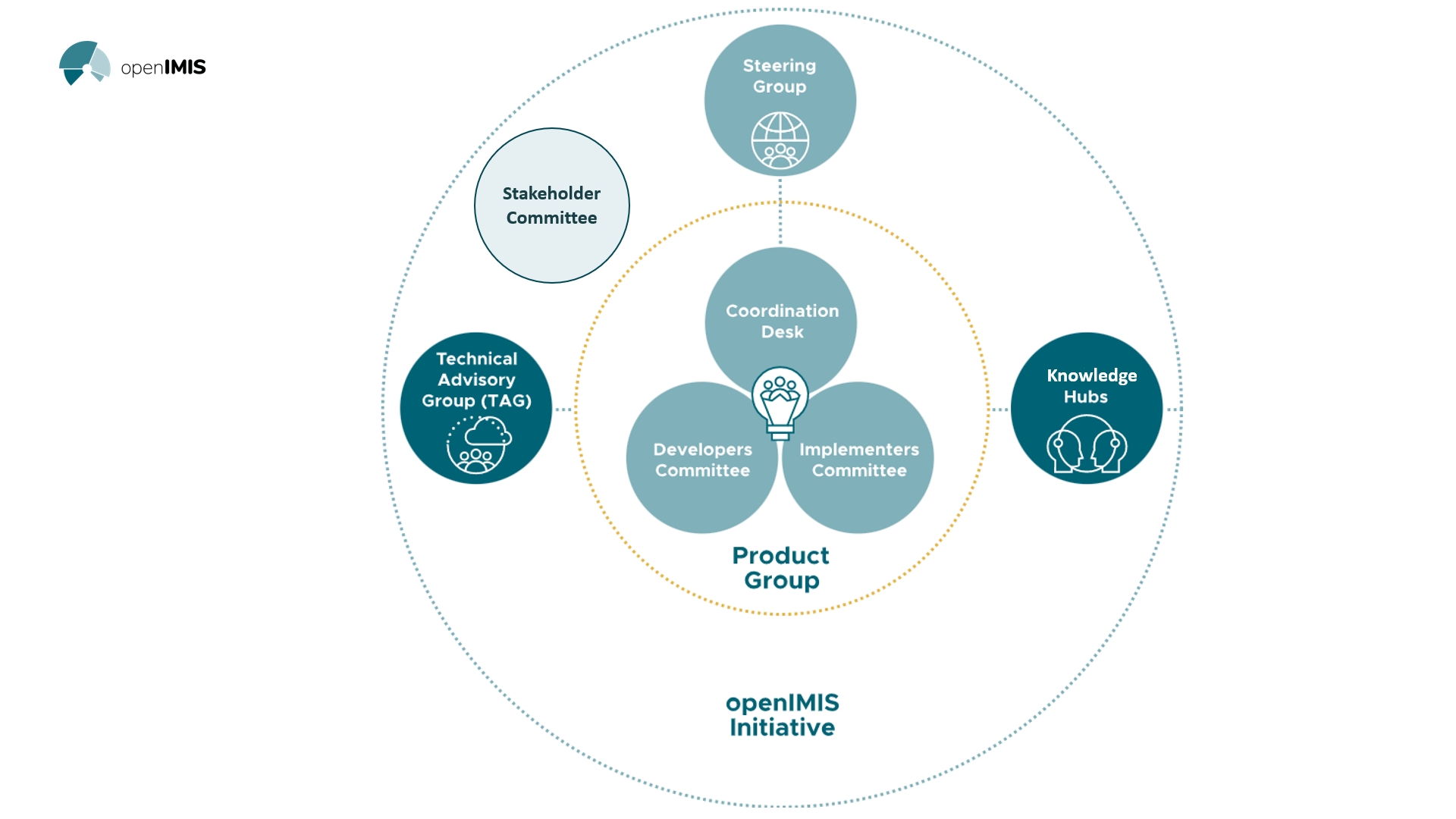The openIMIS initiative is focused on creating a sustainable community of practice of various types of users and contributors to the openIMIS software product. In order to achieve and sustain this vibrant openIMIS community, a governance structure to facilitate the various processes within the initiative has been designed. The governance structure aims to define roles and responsibilities to various actors within the community in order to create an efficient and transparent system of information flow and knowledge dissemination. The governance structure aims to bring various stakeholders - current and potential users, implementation and software development experts, specific subject experts onto common platforms to learn about openIMIS, to help develop openIMIS further, or to help spread information about openIMIS further.
The aim of the global openIMIS Initiative is to create a community of practice, where different individuals and organisations at diverse levels are able to contribute to the development and implementation of the openIMIS product. The main objectives of this organisational structure are to:
Create transparent and efficient governance structures which assign clear roles and responsibilities to the different actors (user countries with their (health) insurers implementing openIMIS, implementation partners, relevant health financing actors, software developers, centralized technical support organisation, technical advisory group, steering group, program coordination desk)
Offer opportunities for individuals and organisations to learn about openIMIS and become a service provider, e.g. as implementation partner or local support team
Create an ecosystem which offers social protection organisations a range of qualified implementation, training and software development/ integration partners to choose from
Create a stable structure to ensure proper maintenance of the openIMIS product and to create a user support structure for organisations using openIMIS
Create a structure for the continuous improvement through addition of new modules and step-by-step transition to a modular open source solution
A short description of the roles and responsibilities of the various groups in the governance structure are provided below.

Figure 1: Organisational structure
The following overview briefly describes the role of each partner:
Steering Group defines overall strategic direction, and decides on the support to potential implementations through the The openIMIS Catalytic Implementation Fund
Stakeholder Committee provides advice to support the overall outcomes of the openIMIS Initiative.
Product Group forms the core of the openIMIS Initiative. It consists of:
Coordination Desk operationalizes defined strategic direction, administers budgets and oversees the activities of the involved working groups.
Developers Committee develops, maintains and supports at global level the core of openIMIS
Implementers Committee supports at global level implementations regarding implementation steps, training material, requirements of business processes for openIMIS.
Technical Advisory Group (TAG) provides technical advise to the openIMIS Initiative in its strategic developments, proposals on system architecture and any new functional requirements. The group consists of experts from various fields such as computer science, public health, social protection, data science etc.
Knowledge Hubs provide support to the community at various levels in order to promote the use of openIMIS, creation and dissemination of knowledge around openIMIS, as well as for capacity development.
In addition to the groups described in the governance structure above, Implementation Partners contribute in various capacities to multiple groups in the governance structure. These implementation partners provide support to scheme operators/user organizations for implementing openIMIS as well as playing a critical role in increasing the uptake of openIMIS by more schemes. The activities of the implementing partners in implementations together with their activities in the global community enable them to build very strong linkages between the global community and local users and communities. Some examples of the support provided by implementation partners are:
Providing business process design solutions
Supporting the implementation of openIMIS in a specific context
Capacity building on openIMIS and business processes in a specific implementation context